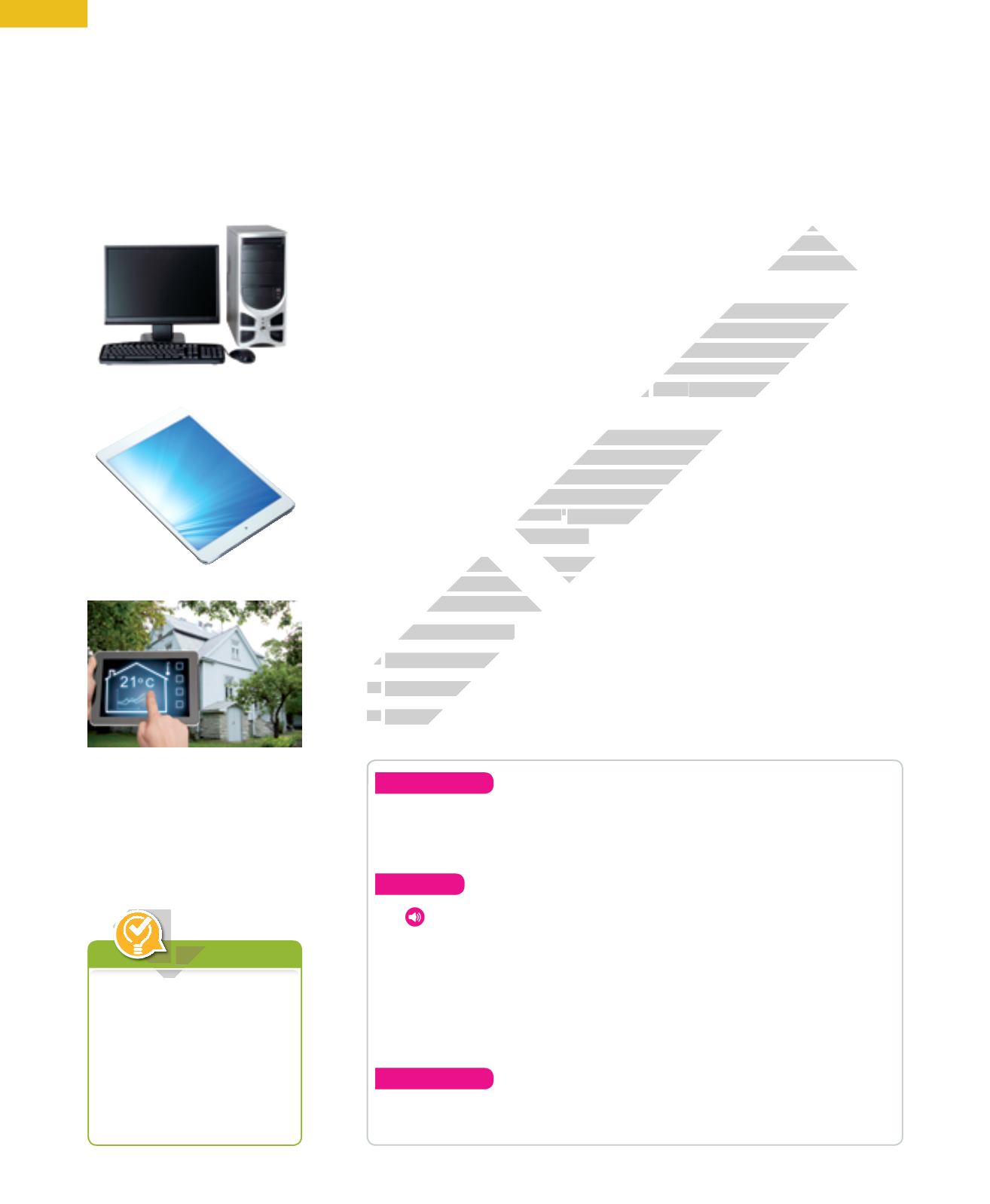
6
1.
WEB 1.0, WEB 2.0, WEB 3.0
When we talk about
Web 1.0
,
2.0
or
3.0
, we are not talking only about the
Internet. We are also talking about the way that users participate in activities
online.
❚❚
WEB 1.0 or the read-only web
:
in the 1990s, information on the Internet
was only for reading. It was a network of documents and people could not
interact with the content. For example, they couldn’t give their opinions, ask
for information or register as users. In addition, the information online was not
updated
1
very frequently. Almost everything that people used online was also
part of the World Wide Web (www).
❚❚
WEB 2.0 or the social network
: this was developed during the first decade of
the 21
st
century. In this new web, information became bidirectional. Users could
not only receive information, but also create and share it. New services appeared
and became popular, such as
email
,
chats
,
videoconferences
,
forums, blogs
,
wikis
and programs for person-to-person
(P2P)
file exchange. Social networking
was born.
❚❚
WEB 3.0 or the semantic web
: from 2006 onwards, new technologies allowed
the integration of data and the web so that programs could ‘understand’ and
work with the information that they received.
Cutting-edge
2
developments
formed the basis of technological evolution: artificial intelligence (AI); applications
that do not use a
browser
3
, such as smartphone apps; virtual reality; and the
Global Positioning System (GPS).
In the following sections, you will learn about tools which can help you develop
your Personal Learning Environment. These tools, which are explained in four
sections, will be very useful to you in the future.
1.
Finding information
2.
Managing information
3.
Sharing information
4.
Creating Information
Web 1.0.
Understand
1.
How did people find, manage, share and create information before
computers and the Internet were invented? Make a list and discuss your
ideas with classmates.
Analyse
2.
Listen and complete the comments. Then discuss them in groups.
a)
Why should we 1 _____________________ the names of capital cities? That
2 ____________ is on the Internet.
b)
Should we 3 __________ texts directly from the Internet for our 4 _______
? Why or why not?
c)
Why shouldn’t we 5 ____________ everything on the Internet? Which 6
____________ can we trust?
Understand
3.
Find information about artificial intelligence, virtual reality and GPS. Take
notes and then compare information with your classmates.
Web 2.0.
Web 3.0.
1
updated
: revised to include recent
information
2
cutting edge
: the newest or most
advanced
3
browser:
a special program for
reading web pages
Key concept
❚❚
Web 1.0 was only a source
of information.
❚❚
Web 2.0 allowed people to
exchange files.
❚❚
Web 3.0 integrated data
and the web so that new
programs could understand
information and work with it.
ADVANCE EDITION


